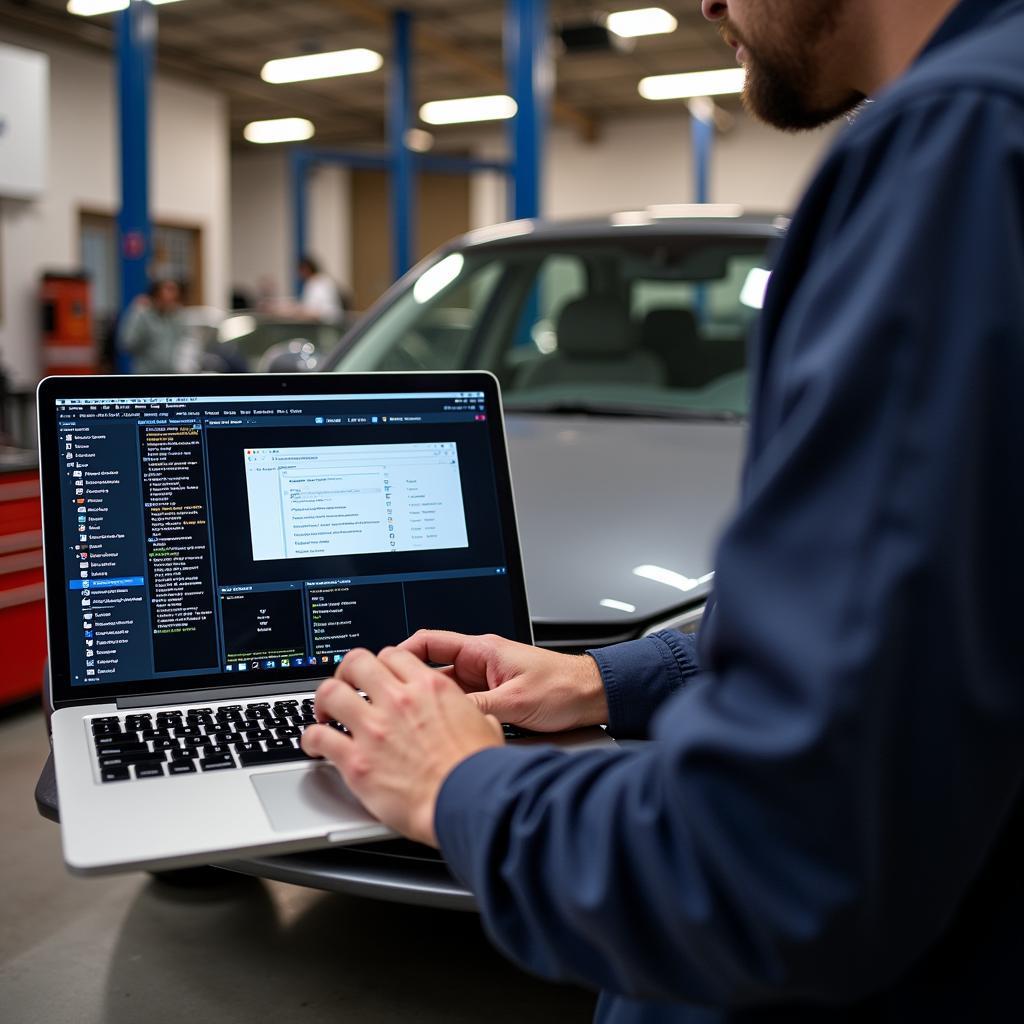The dreaded brake warning light on your Mazda 3 dashboard – a sight no driver wants to see. While it can signal a minor issue, it can also indicate a serious problem within your braking system. Ignoring it is never an option, as it could compromise your safety and that of others on the road. This comprehensive guide will delve into the common causes of a Mazda 3 brake warning light and provide you with potential solutions, empowering you to address the issue head-on.
Understanding Your Mazda 3’s Brake Warning System
Your Mazda 3 is equipped with a sophisticated electronic brake system designed to optimize braking performance and alert you to potential issues. The brake warning light is a crucial element of this system, illuminating when the system detects an irregularity. Let’s break down the potential reasons behind this warning light:
- Low Brake Fluid Level: The most common culprit, a low brake fluid level often suggests a leak in your brake lines.
- Worn Brake Pads: Brake pads have a finite lifespan. As they wear down, a sensor triggers the warning light, indicating it’s time for a replacement.
- Faulty Brake Light Switch: This switch activates your brake lights when you press the pedal. A malfunction can disrupt the brake light circuit, triggering the warning light.
- ABS Issue: Your Mazda 3’s Anti-lock Braking System (ABS) is critical for maintaining control during hard braking. Problems within the ABS module or sensors can illuminate the warning light.
- Parking Brake Engaged: Sometimes, the simplest explanation is the most likely. If your parking brake isn’t fully disengaged, the warning light might persist.
Troubleshooting the Brake Warning Light
While a professional diagnosis is always recommended for any brake-related issues, here’s a preliminary troubleshooting guide:
- Check Your Parking Brake: Ensure your parking brake is fully released.
- Inspect Brake Fluid Level: Locate your brake fluid reservoir (refer to your owner’s manual) and check if the fluid level falls between the “Min” and “Max” lines.
- Examine Brake Pads: Visually inspect your brake pads through the wheel spokes. If they appear significantly thin, it’s likely time for a change.
When to Seek Professional Help
If the above steps don’t resolve the issue, or if you notice any of the following, it’s crucial to consult a qualified mechanic immediately:
- Soft or Spongy Brake Pedal: This could indicate air in the brake lines, significantly reducing braking efficiency.
- Grinding Noise When Braking: This often suggests severely worn brake pads, potentially damaging your rotors.
- Pulling to One Side While Braking: Uneven brake pad wear or a malfunctioning caliper can cause this, requiring immediate attention.
“Ignoring a brake warning light is like playing Russian roulette with your safety,” warns veteran mechanic John Anderson. “Even if the car seems to be braking fine, there could be an underlying issue that could lead to brake failure down the line.”
Preventive Maintenance for Optimal Brake Health
Just like any other component in your Mazda 3, your braking system thrives on regular maintenance. Here’s how to keep your brakes in top condition:
- Regular Brake Inspections: Aim for a brake inspection at least once a year or every 12,000 miles.
- Timely Brake Fluid Flushes: Brake fluid degrades over time, absorbing moisture that can corrode brake components. Flush your brake fluid every 2 years or as recommended by your owner’s manual.
- Develop Good Braking Habits: Avoid riding your brakes and anticipate stops to minimize wear and tear on your braking system.
 Mazda 3 Brake Pad Inspection
Mazda 3 Brake Pad Inspection
Remote Diagnostics and Software Solutions
Advancements in automotive technology have paved the way for remote diagnostics and software solutions for certain brake-related issues. Specialized technicians can remotely access your Mazda 3’s onboard computer system to:
- Diagnose Fault Codes: Retrieve and interpret diagnostic trouble codes stored in your car’s computer, pinpointing the root cause of the brake warning light.
- Perform Software Updates: In some cases, software glitches within your car’s electronic control unit (ECU) can trigger the warning light. Remote software updates can rectify such issues.
- Offer Technical Support: Remote technicians can provide real-time guidance and support, helping you understand the problem and explore potential solutions.
While remote diagnostics and software solutions offer a convenient avenue for addressing certain issues, it’s essential to remember that not all brake problems can be solved remotely. A hands-on inspection is often necessary to assess the physical components of your braking system.
Conclusion
A glowing brake warning light in your Mazda 3 should never be ignored. By understanding the potential causes, following the troubleshooting tips, and knowing when to seek professional help, you can ensure the safety and longevity of your vehicle. Remember, timely maintenance and a proactive approach to addressing warning signs are key to enjoying a safe and worry-free driving experience.
FAQs
1. Can I drive my Mazda 3 with the brake warning light on?
It’s highly discouraged. While you might still have some braking ability, driving with the brake warning light on poses a significant safety risk. Have your car inspected by a mechanic immediately.
2. How much does it cost to fix a Mazda 3 brake warning light?
The cost varies greatly depending on the underlying cause. It could be as simple as topping off your brake fluid or as involved as replacing major brake components.
3. How often should I replace my Mazda 3’s brake pads?
Brake pad lifespan depends on driving habits and conditions. Generally, expect to replace them every 30,000-70,000 miles.
4. Can a faulty ABS sensor cause the brake warning light to come on?
Yes, a malfunctioning ABS sensor can trigger the brake warning light.
5. Where can I find a qualified mechanic to diagnose my Mazda 3’s brake warning light?
You can search online for certified Mazda dealerships or reputable independent mechanics specializing in Mazda vehicles.

